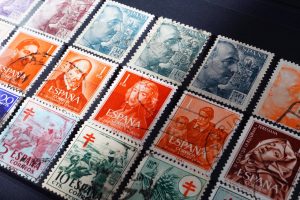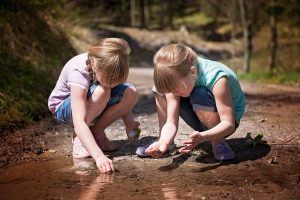 Have you noticed how children in elementary school often have collections of stuff? Rock collections, stamp collections, coin collections, all sorts of trading and theme cards, dolls from around the world, and even books from a series are incredibly popular.
Have you noticed how children in elementary school often have collections of stuff? Rock collections, stamp collections, coin collections, all sorts of trading and theme cards, dolls from around the world, and even books from a series are incredibly popular.
Collecting tends to be very popular during middle childhood. This is largely due to an interesting and very observable change in categorization strategies. While younger children are keenly figuring out what things belong in what category and are learning words for these things– animal, toy, food, vehicle — children 6 or 7 years to around 11 years are fascinated by relationships among categories and in different kinds of hierarchical structures. This is a new way of thinking that reflects expanding abilities to use logic in grouping things together and recognize variability. While children this age are continuing to amass information, as they did when they were younger, during middle childhood they really begin to conceptually manipulate the facts they have learned.
The thinking and social abilities involved in collecting
Dinosaurs and dogs are both animals, but one is mammal and the other reptile. Dogs are related to wolves and coyotes, and both are part of a larger group called canines. Dogs and dinosaurs are grouped together as, say vertebrate animals, and they are therefore different from non-vertebrates and from plants or minerals. Yet dogs and dinosaurs also differ from one another in other ways. Thinking like this shows flexibility and logic since relationships vary by circumstance.
This fascination with principles of categorizing and classifying is clearly seen in collecting. Children this age delight in collecting, organizing and trading. While little children sometimes like to gather favorite things, like stuffed animals or stickers or different kinds of legos, they do not organize their collections or think about them as older children do.
Not only do they collect, but school age children love to talk about their collections with other children; trading items, sharing facts, exploring and telling about new additions. This reflects expanding social abilities. During middle childhood, children are opening to others and creating friendships based on shared interests and compatibility, creating with their peers new kinds of social relationships that are important and meaningful. Friendships based on shared interests are very important and different from friendships of younger children., which often turn on proximity and familiarity. Through these friendships, school age children are expanding their sense of self and building a rich range of social skills related to sharing, cooperating, negotiating and connecting. Collections provide a tangible means for doing this.
So collecting has both cognitive and social aspects to it. Happily, collections needn’t be expensive — lots of items are free or very low cost. (Nature freely provides rock and bug collections.)
are free or very low cost. (Nature freely provides rock and bug collections.)
Applying the information
If your child shows an interest in collecting, you may want to encourage it. Gently, not getting in the way or taking over, by Scaffolding Skillfully. You can help make it possible for your child to gather things. You may want to let her do tasks to earn spending money if it is needed. You can help your child learn to gather information about the things he collects by searching in books and libraries, using on-line search engines, going to shows, museums, exhibits or sporting events. You can make it easy for her interact with friends, in person or by sharing photos or even texting, whatever ways suit your child’s age and your guidelines. An added bonus to collecting is that it is likely to increase time spent thinking and socializing and reduce time spent merely staring at electronic devices.